Cooking is chemistry, and every time you set foot in your kitchen, you walk into a laboratory, packed with high-tech gear and stocked with supplies, made just for you. People say cooking is an art, and that’s true, but the science of cooking is easier to grasp and repeat. Understanding it will make you a better cook and help you have a little fun in the process. If you hate cooking, or you don’t think you’re any good at it, here’s your solution.
Cooking is Science, So Study Hard
There are some simple scientific principles you can take with you to the kitchen to improve your food and have a little more fun. In this post, we’ll walk you through them, and introduce you to a movement that wants to bring the benefits of modern technology, experimentation and observation into your kitchen. Finally, we’ll look at some food hacks that incorporate these methods and explain why they work so well.
To help us, we teamed up with J. Kenji Lopez-Alt, Chief Creative Officer at Serious Eats and the author of The Food Lab, and Jack Bishop, Editorial Director at America’s Test Kitchen. Both gentlemen are experts when it comes to using science in the kitchen to make delicious food, and so you have a better time “in the lab”, as it were. As Jack Bishop put it, “Cooking is chemistry and physics, except you get to eat your lab work.”
Some Basic Principles to Learn that Will Drastically Improve Your Cooking
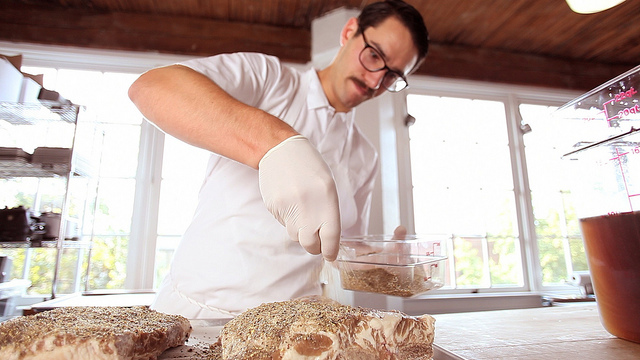
If you’re not convinced that science has a place in the kitchen, just look at a recipe. Ingredients and measurements, instructions and written documentation, all designed to lead you to a specific, repeatable outcome that someone else has also perfected. Baking is a bit more precocious, but it’s a science in its own right. While a cake or souffle can go wildly wrong if your measurements are off, the best bakers know the principles behind their craft, so they know by look and feel whether they’ll get their desired result. At its core, cooking is the process of taking a series of ingredients, combining them, using energy to apply heat or cold, and working with them to produce a delicious, nutritious and hopefully fun experimental result.
Speaking of recipes, when I asked Jack Bishop for some recipes he thought would get a home cook interested in the science of cooking, he suggested that it would be more helpful to master some basic principles rather than focus on recipes:
Learn the Science of Measurements (and Make Sure You Have the Tools for the Job)
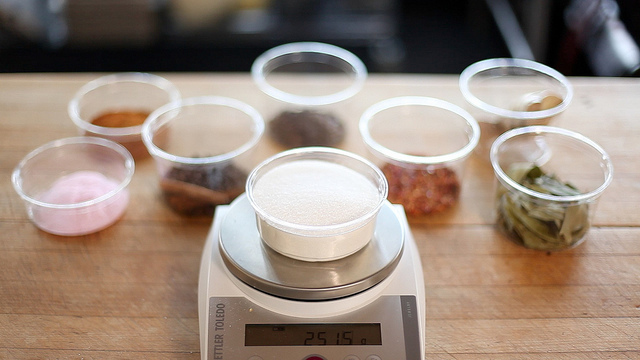
If you know how to follow instructions, you can follow a recipe. The key is to pay attention, learn to interpret and understand measurements, and make sure you have the basic tools to help you succeed: measuring cups or spoons, a timer, a thermometer and a kitchen scale (when you’re ready, you can add a few helpful upgrades). Kenji stressed (and we agree) that one of your kitchen investments should be a good thermometer. It may cost you though. The Sweethome, a spinoff site from our friends at The Wirecutter, just picked its favourite instant-read thermometer, the CDN DTQ450X ProAccurate Quick-Read Thermometer. I’m partial to classic Thermoworks Thermapen, popularised by Alton Brown, which The Sweethome also suggests if you’re willing to spend a little more.
Don’t worry, measurements and recipes don’t have to be a crutch, and there’s always room for experimentation. If you’re just getting started, or you want reproducible results, stick to the recipe and pay attention. You’ll begin to understand how much of what adds which specific flavours to your dishes. For example, I quickly learned that when a recipe calls for a single clove, it’s just not enough flavour for me. Whenever a TV chef says “add one or two cloves of garlic” to a recipe that’s supposed to feed four, I know I should double that, if not more.
Learn Your Cooking Methods Inside and Out
As with any scientific endeavour, you need to do is break down the language barrier between yourself and your study topic. When it comes to cooking, you’ll want to understand cooking methods on their own terms. Learn the differences between dry cooking methods (frying, baking, roasting, broiling grilling) and wet cooking methods (poaching, boiling, braising, steaming, stewing). You may be familiar with them, but this rundown at Wikieducator goes into deeper detail on each.
Studying cooking methods does more than just clear up terminology: By understanding each, you’ll also understand how foods and flavours develop under different conditions and temperatures. For example, poaching involves a gentle, stable liquid cooking environment with relatively low temperatures, while sautéing or frying are high-temperature techniques separated largely by how much oil is involved. Sautéing implies a thin film of oil while frying can involve a thick layer or completely submerging food in oil, a la deep frying. Once you’re familiar with each, you’ll also be familiar with how temperature plays a role in cooking different types of food, and you’ll be able to see your desired result and the cooking method to get you there more easily.
High Heat Develops Flavours, But Gentle Heat Prevents Overcooking
If you’re not familiar with the Maillard Reaction, it’s the chemical process that creates delicious browning on seared meats, baked or toasted breads, malted barley in your whiskey or beer, and roasted coffee. Understanding the chemical process behind the Maillard Reaction will do you well in the kitchen. The video above does a great job of explaining the process, as does this article from Modernist Cuisine. Jack noted that browning equals flavour, so you would do well to look to cooking methods that promote it, either at the beginning or the end of the cooking process, especially with meats.
Regardless, Jack explained that you’re less likely to overcook a roast in a 120C oven than a 230C one. For example, 180C is generally referred to as the “universal” baking temperature, and that’s for a reason. Most common dishes can be cooked in a reasonable amount of time at that temperature. He also explained that the heat differential from the outside to the inside of your dish is lower in a cooler oven (or on a cooler grill), so you have a bigger window to experiment without ruining your dish. Many people hate cooking and ruin dishes for no other reason than that they cook at entirely too high temperatures, so don’t hesitate to turn it down a bit.
Hot Food Keeps Cooking, and Resting Heat Maximises Juiciness
You’re probably familiar with both of these principles by now, but they’re both explained in detail in Cooks Illustrated’s The Science of Good Cooking. Kenji explains in detail at the Food Lab why it’s so important to let meat rest, and it’s also important to remember that even after you’ve removed food from direct heat, its internal temperature will continue to rise for a short resting period before it begins to come back down. If you’re cooking meat, that means you should expect the internal temperature of your meats to come up a bit after you’ve taken them off the heat or out of the oven. For veggies, this is why many cooks stop the cooking process with an ice bath after removing them from the heat — doing so preserves their texture at the moment they’re pulled off the stove.
Write Down Your Lab Results
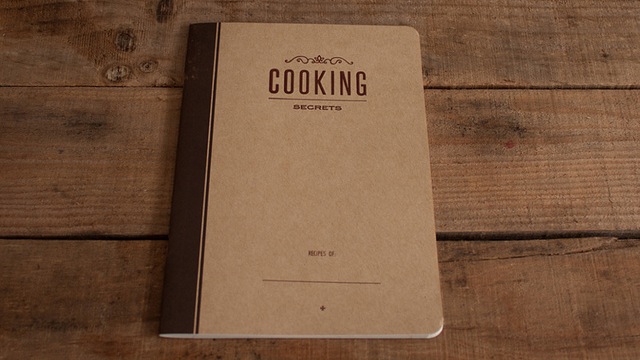
J. Kenji Lopez-Alt shared this lesson for aspiring chef/lab technicians looking to improve their cooking with the scientific method:
I think Adam Savage from Mythbusters put it best, and I’m paraphrasing, but he said something like “the difference between screwing around and science is that with science, you write it down.”
I like that a lot, because it illustrates what is important about science: precision and repeatability. My advice for cooks who want to learn what they are doing in the kitchen is to simply start paying attention to details. Write down what you are doing, take notes, review your notes. If something went wrong, try and track down what step it was or what ingredient threw it off so you can learn from your mistakes.
Kenji noted that many people forget that there’s just as much science in cooking a steak or a hamburger as there is in cooking something flashy and full of unpronounceable ingredients. Just because you don’t happen to have sodium citrate at home (more on that later) doesn’t mean you can’t see the science of a sizzling steak.
Some Useful Food Hacks and the Science Behind Them
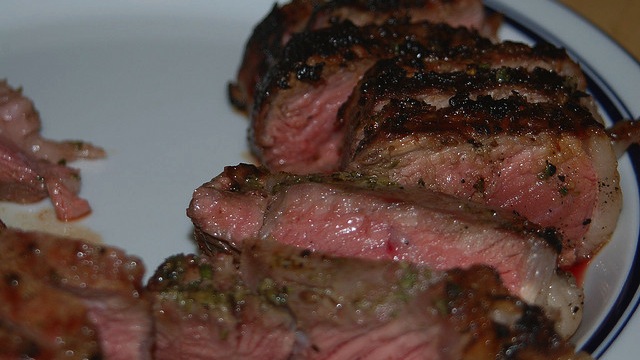
Both Jack and Kenji shared some simple, elegant tips to take into the kitchen with you that can improve your cooking using the power of science. Here are a few:
- Master the reverse sear. We’ve mentioned the reverse sear in the past, but both Kemji and Jack recommended it without knowing the other would. Cooks Illustrated and The Food Lab have both rigorously tested the process with the same result. Kenji explains:
For cooking meats, the reverse-sear is pretty much my standard for any kind of searing or roasting, no matter the type of meat. It’s a technique I developed for cooking steaks while I worked at Cook’s Illustrated, but it has applications in all kinds of cooking. Basically, traditional recipes will tell you to sear your meat first – say, by starting a prime rib in a blazing hot oven – then finish it off low and slow. This is a technique based on the false idea that searing somehow seals in juices or locks in flavour.
In fact, through some very rigorous testing, I found that the exact opposite is the case: you lose more juices by searing first than you do by searing at the end. When cooking a prime rib, I’ll start it off as low and slow as possible — 6 to 8 hours in an 80C oven, if possible. Once the meat has hit the desired final temperature (55C for medium rare), I’ll remove it from the oven, pump up the heat, blast it to crisp and brown the surface just before serving. You get juicier, more evenly cooked meat with a better crust and the added advantage that the meat doesn’t need to rest, as there is no temperature gradient inside.
The reverse sear is a great way to reheat steaks without drying them out too.
- Don’t forget the salt. You may already know how important salt is in frying or searing, but even if you’re marinating, don’t skip the salt. Jack explains that it’s salt that actually makes meat more tender and contributes to your meat taking on the flavour of your marinade. Acidic ingredients like vinegar, lemon juice or that bottle of Italian salad dressing, he notes, just break down the outermost layer of tissue on your meat via enzymatic reaction and makes it gross and mushy.
- Melt your butter for chewy cookies. If you’re baking cookies and want chewy instead of crispy, the key is to melt your butter first. Jack explains:
Butter is about 18 per cent water. If you melt the butter, that water will mix with the proteins in the flour to form gluten — the stuff that makes bread (or cookies) chewy.
Many recipes suggest you “cream” your butter, or beaten at a slow speed until it becomes smooth and frosting-like before you add sugar or other ingredients. That’s fine if you want crisp cookies, but who doesn’t like a soft, chewy chocolate chip cookie?
- Bloom ground spices in hot oil to open up their flavour. Jack explained that most spices contain a wealth of fat soluble flavour that’s all locked up inside. Most of us tend to add spices to water-soluble liquids and stir them up long after sautéing onions or garlic, but Jack suggests we start with them instead:
Don’t add spices to a pot of chilli after the liquid has been added. Instead, add the chilli powder, cumin and ground coriander to the pot with the onions. Spices contain a lot of fat-soluble flavour compounds, and cooking them in vegetable oil (rather than water-based ingredients) brings out their full flavour.
This goes double for older ground spices. Alton Brown explains in this episode of Good Eats that your spices are best bought whole and grated on demand. We couldn’t agree more, but if you do have ground spices in your pantry (like most of us do), this is a great way to extract every last bit of flavour from them.
- Tame tricky emulsions with a dab of mayo. Emulsions are a beautiful example of chemistry at work in the kitchen. An emulsion is a combination of oil-based ingredients and water-based ingredients, like a mixture of oil and vinegar in a vinaigrette, or water and butter fat in butter. Salad dressings, Hollandaise sauce, and even the froth on top of your morning espresso are all examples of emulsions, and getting them to cooperate can be tricky. Jack suggests the secret to making your emulsions more stable — that is, so they don’t immediately separate into their water and oil parts as soon as you stop whisking, stirring or shaking — is to add a dab of mayonnaise. Since mayo itself is an emulsion that ha been stabilised by the lecithin in egg yolks (or by an artificial stabiliser, depending on the mayo you buy), adding a dab will lend its properties to your salad dressing or sauce. I’ve done this before, and it works like a charm.
- Reach for cocoa power when you need serious chocolatey flavour. If you’re baking and want to amp up the chocolate flavour in your cookies and cakes, you could always try and grate some chocolate into your dish or melt a little to go into it, but it’s generally a bad idea. You’ll introduce a lot of liquid and fat you may not intend when what you really wanted was flavour. Jack offers this tip instead:
Ounce for ounce, cocoa powder has more flavour than other forms of chocolate. That’s because it’s 100 per cent chocolate, with a high proportion of the tasteless cocoa butter removed. What’s left behind? The cocoa solids that provide all the flavour we associate with chocolate. An ounce of cocoa powder has the same flavour impact as 1.6 ounces of unsweetened chocolate or 3.8 ounces of bittersweet chocolate. Cocoa powder is the secret source of intense chocolate flavour in many of our cakes and cookies.
- Keep an “umami bomb” at the ready for emergency savoury injections. I love savoury foods. It’s a bit of a weakness. When both Kenji and Jack both suggested some quick ways to add savoury flavour to virtually any dish, I perked up. Jack recommends the humble anchovy — which may make you turn up your nose — as a pantry staple. He adds them to beef stews, chilli and braises. A little bit will go a long way (even anchovy paste will work) and seriously amp up the meaty flavour of your dish without adding fishiness. Kenji’s three “umami bombs” also feature anchovies, but he also keeps marmite and soy sauce at the ready for everything from marinades, salad dressings, soups, and even meatloaf. All three add incredible savoury flavour to whatever you’re making without imparting their own to the dish.
- Try cooking sous vide. Perhaps the biggest example of science in the kitchen is the sous vide cooking method. Even a few years ago, you’d be hard pressed to find a thermal immersion circulator in a kitchen near you, but they’re easy to find now. Plus, commercial water ovens are getting more and more affordable, and they are making their way into homes where people like you and I are experimenting with the cooking method. If you’re interested in it, our primer on sous vide cooking and how to do it on a budget is a must-read. Don’t worry, you can get started even if you don’t have a water oven. I followed Kenji’s example and used a cooler, but you could even use your kitchen sink.
I also spoke briefly to the team behind Modernist Cuisine about its newest book, Modernist Cuisine at Home, which aims to bring those more adventurous and experimental techniques to home kitchens. You may have seen some of their tips before at Chow’s MDRN KTCHN video series, hosted by Scott Heimendinger, Director of Applied Research at Modernist Cuisine. If you’re looking for easy, applicable ways to add a little science to your cooking game, they’re worth watching.
These are just a few suggestions, but they’re by no means all of them. Some of the best food hacks that feature modern cuisine are ones we’ve mentioned in the past, including Modernist Cuisine’s method for perfectly melty cheese (spoiler: the secret is adding sodium citrate). Also, this method for making infused liquors, oils and syrups in seconds with a whipping siphon may require you have some gear on-hand, but the result gives you infusions in mere moments that normally take weeks. Finally, if you’ve ever brined a turkey, there’s serious science at work there that’s worth understanding. Once you do, you’ll move beyond turkey to pork and chicken — both of which take well to brines.
Additional Reading
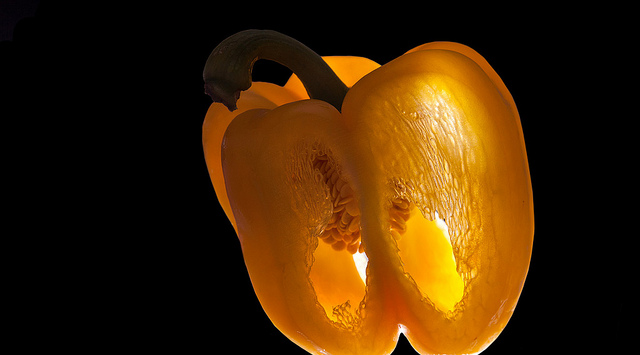
For more information on the science of cooking, and how your kitchen is essentially a laboratory for the tasty sciences, here are a few books worth checking out, some of which were used as references for this article:
- Cook’s Illustrated: The Science of Good Cooking, by The Editors of America’s Test Kitchen and Guy Crosby PhD
- On Food and Cooking, by Harold McGee
- The Kitchen as Laboratory: Reflections on the Science of Food and Cooking, by César Vega, Job Ubbink and Erik van der Linden
- Modernist Cuisine: The Art and Science of Cooking by Nathan Myhrvold, Chris Young and Maxime Bilet, and Modernist Cuisine at Home by Nathan Myhrvold and Maxime Bilet
- I’m Just Here for the Food and Gear for Your Kitchen by Alton Brown
It may seem daunting at first, but paying attention to the science behind your food and your cooking actually simplifies the process in the long run. Like with most things, you’ll understand why and how cooking methods work the way they do and ingredients taste the way they do. Since you’ll be able to peek behind the veil and understand the processes at work, you’ll eventually be able to free yourself from recipes and experiment on your own, which makes you a better, more creative cook.
Jack Bishop is Editorial Director at America’s Test Kitchen.
J. Kenji López-Alt is the Chief Creative Officer at Serious Eats and the author of The Food Lab.
Both gentlemen volunteered their expertise for this feature, and we thank them.
Pictures: Monika Wisniewska/Shutterstock, Chefsteps/Flickr, Chefsteps/Flickr, João & Raquel/Flickr, Chris Schlosser/Flickr, Chefsteps/Flickr
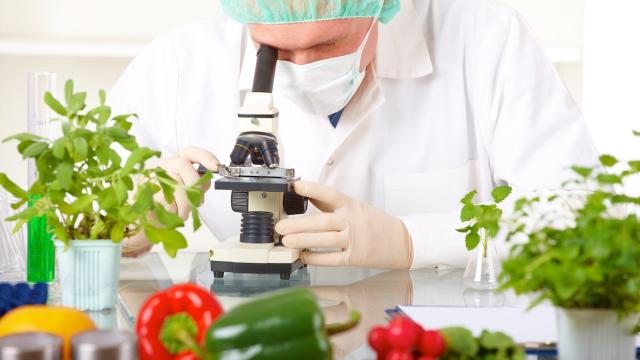
Comments
One response to “How To Improve Your Home Cooking With The Power Of Science”
I find watching cooking videos online helps as well, like this one here: http://www.youtube.com/watch?v=S5qUMK-TzOg